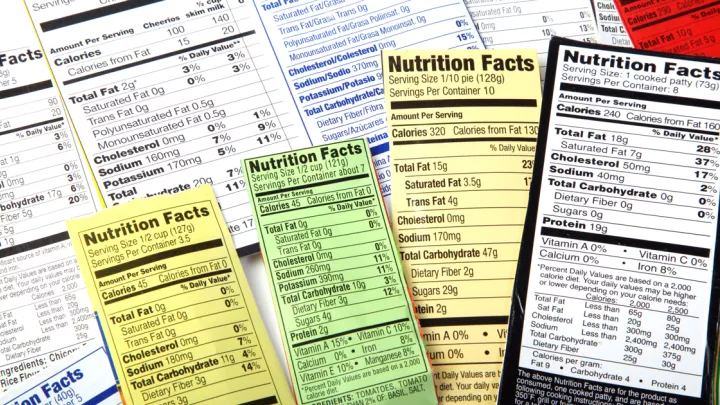Is there a new food pyramid? What you need to know about MyPlate

The old food pyramid most of us have been familiar with for years has been replaced by a new and improved concept. Dietary recommendations are updated about every five years to align with current research and health data.
Although MyPlate may be new to many of us, the MyPlate diagram was introduced back in 2010 alongside the updated Dietary Guidelines for Americans and fully adapted in 2011. The goal? To create a more accurate visual representation of portion sizes for different food groups and to offer guidelines that may be more applicable to the everyday American.
What was wrong with the old food pyramid?
The previous food pyramid focused more on foods to have in moderation versus foods to have more frequently. While the old food pyramid wasn’t necessarily incorrect, it was complicated, didn’t represent portion sizing, and didn’t show what the average meal should look like on a plate.
“We often misjudge portion sizes, get confused by nutrition labels or get carried away when serving our meals,” says Nebraska Medicine nutrition therapist Courtney Sikora, MMN, RD, LMNT, LD. “MyPlate is a better meal-by-meal approach that can be easier for everyone to follow. The updated guidelines are consistent with previous recommendations, are slightly more flexible regarding nutrient-dense food, and do a slightly better job of reinforcing that there is no one perfect way to eat. Food choices need to be tailored to the individual on a nutritional, religious and cultural basis.”

How does MyPlate work?
The 2020 MyPlate model shows a plate divided into four sections, with a fifth “dairy” section on the side. Each section represents how much food from each group should be eaten at a meal. The graphic represents five food groups: fruits, vegetables, proteins, grains and dairy.
Consider Sikora’s food group recommendations when planning healthy meals:
- Protein: When opting for meat as your protein source, consider lean cuts of meat like chicken breast or turkey more often. Nutritious plant-based protein sources include tofu, nuts/seeds, nut butter, lentils, beans and peas.
- Grains: Opt for a whole grain source 50% of the time. Examples of whole grains include whole wheat bread, oatmeal, brown rice and wheat crackers.
- Vegetables: Choose variety. The more colors you can have in a day, the better.
- Fruits: Mix it up and focus on whole fruits. The more colors you can have in a day, the better.
- Dairy: If you are allergic to milk, have lactose sensitivities, or prefer to avoid dairy, look for plant-based milk and yogurt fortified with calcium to ensure you are still meeting your nutritional needs. This group does not include foods made from milk that have little calcium and are high in fat (i.e., butter, cream, sour cream).

The MyPlate App may be helpful if you are looking for some added accountability to reach your nutrition goals.
Does MyPlate work for patients with a chronic condition?
“MyPlate portions may still be appropriate for patients with a complicated medical history, but there are specific food choices and recommendations for various disease states,” says Sikora. “If one of these diagnoses applies to you, it would be in your best interest to seek guidance from a registered dietitian.”
MyPlate also offers an easier visual when eating in restaurants
Eating out can be frustrating when trying to eat healthy, and stress can trigger overeating. In addition to our nine hacks for eating out, try to find ways to add extra vegetables to your order, visualize the MyPlate graphic when your plate arrives and adjust. Box up what doesn’t fit the appropriate portions on “your plate” and take the rest home.
Visit www.nebraskamed.com/weight-loss for more information on weight loss, or call 402.559.9500.







